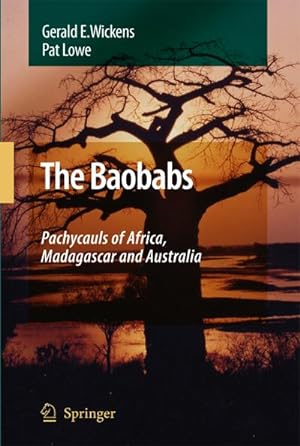9781402064302 - The Baobabs: Pachycauls of Africa, Madagascar and Australia von Wickens, Gerald E.; Lowe, Pat (1 Ergebnisse)
Produktart
- Alle Produktarten
- Bücher (1)
- Magazine & Zeitschriften
- Comics
- Noten
- Kunst, Grafik & Poster
- Fotografien
- Karten
-
Manuskripte &
Papierantiquitäten
Zustand
- Alle
- Neu
- Antiquarisch/Gebraucht
Einband
- alle Einbände
- Hardcover
- Softcover
Weitere Eigenschaften
- Erstausgabe
- Signiert
- Schutzumschlag
- Angebotsfoto
Land des Verkäufers
Verkäuferbewertung
-
The Baobabs: Pachycauls of Africa, Madagascar and Australia
Verlag: Springer Netherlands, 2008
ISBN 10: 1402064306ISBN 13: 9781402064302
Anbieter: AHA-BUCH GmbH, Einbeck, Deutschland
Buch
Buch. Zustand: Neu. Druck auf Anfrage Neuware - Printed after ordering - Although Alexander von Humboldt never saw a baobab, he wrote: 'Among organic creatures, this tree [Dracaena draco (dragon tree)] is undoubtedly, together with the Adansonia or baobab of Senegal, one of the oldest inhabitants of our planet' (Humboldt 1852). With their enormous size, distinctive and often grotesque appearance, and great age (measured perhaps in thousands of years), baobab trees attract the attention of botanists, amateurs, tourists and passers-by wherever they grow. Old specimens display highly individual, photogenic characteristics which endear them to local people, artists and photographers. European knowledge of the African baobab dates back to Renaissance times. I first became acquainted with the African baobab in 1952 while working in what was then Sokoto Province, Northern Nigeria. Later I worked in the former Rhodesias (now Zambia and Zimbabwe) and in the Sudan, and was able to further my studies. Although I have written about the African baobab, it was Pat Lowe who, in January 2000, persuaded me that we should pool our knowledge and ex- riences and write a book on all eight species of this outstanding genus. While I take full responsibility for the final text, I have taken advantage of her knowledge of baobabs in Africa, Madagascar and especially Australia, and of her constructive criticism of the text.


